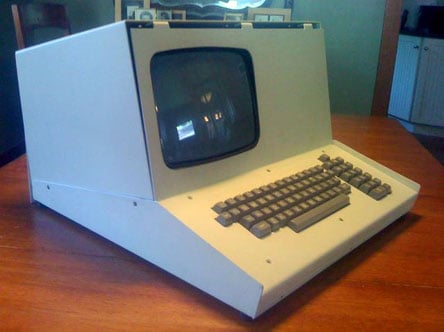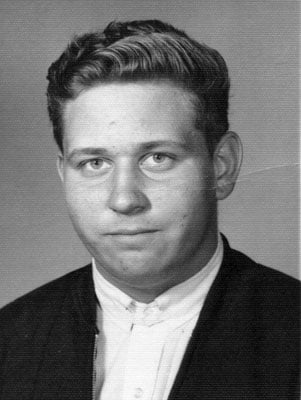
5 Facts about Sphere 1 Computer
- Sphere 1 Computer was a personal computer and one of the first functional microcomputers.
- The Spherical I was designed by Michael Donald Wise and Monroe Tyler of the Sphere Corporation in Bountiful, Utah, and finished in 1975.
- A keyboard-operated reset mechanism was also incorporated in Sphere 1, consisting of two keys linked in series that transmitted a reset signal to the CPU, causing a hard reboot. According to Wise, this signaling was the first keyboard-activated reset, and it was a precursor to the now-common Control-Alt-Delete combo.
- SpA Motorola 6800 CPU, onboard ROM, a full-sized CRT monitor, 4 KB of RAM, and a keyboard with a numeric keypad were all included in the Sphere 1 computer.
- The Sphere contained a full-sized display.
Sphere 1 Computer History
The Spherical I was a personal computer designed by Michael Donald Wise and Monroe Tyler of the Sphere Corporation in Bountiful, Utah, and finished in 1975.

Donald Wise, who was a Major in the Air Force stationed in Germany, and his wife Bonnie Jean Eacho gave birth to Michael Donald “Mike” Wise in Wiesbaden, Germany. Mike was born in 1949. He was the third of the couple’s five children.
Quick Facts
- Created
- 1975
- Creator (person)
- Michael Donald Wise, Monroe Tyler
- Original Use
- Personal computer
- Cost
- $860
Sphere Corporation’s creator and president, Michael Donald Wise, was an inventor, not a businessman. Nevertheless, he managed to go to school and write device drivers and two operating systems while in college. In 1970, he founded IPCS, a programming firm that developed a mailing list application on an NCR Century 50. The SEL-810b, IBM 1130, IBM 370/65, IBM 650, and IBM 1410 were among the other machines he utilized in school. Later in his career, Wise was engaged in the development of the TRS-80, Commodore PET, and Macintosh computers, as well as the creation and sale of the first screen-based microcomputer, the WYSIWYG word processor, and a slew of other “firsts.”
Later in his career, he had success in software development, founding A-Systems Co. in 1978, the first company to provide PC-based work cost accounting software, as well as his own Internet business. Michael died in 2002 due to diabetic complications and was cremated and interred close to his parents.

When Sphere 1 computer was about to be released to fund its expansion, it began advertising before the product was fully debugged. And luckily, the company got massive, unexpected demand. In March 1976, Michael Wise resigned as president of Sphere Co. Later it entered bankruptcy in April 1977. Competitors immediately filled the vacancy. Despite this, the Sphere had left an indelible effect on the history of the personal computer, influencing the specifications and design of subsequent generations of hardware. In addition, Sphere 1 inspired a slew of imitators.
Sphere I computer possessed 4 KB of RAM, a Motorola 6800 CPU, onboard ROM, a full-sized CRT monitor, and a keyboard with a numeric keypad. Floppy discs, printers, paper tape punches and readers, additional terminals, digital I/O, and other peripherals are among the options. The Sphere 1 was one of the first fully functional all-in-one microcomputers that could be plugged in, turned on, and used immediately (for a full description, see the Sphere 1 brochure). Below is the Sphere 1 computer advertisement from 1976.

A basic system’s ROM comprises drivers, the BASIC programming language, a debugger, and an assembler. When the disc system was purchased, the user received FDOS (disc operating system with an editor, file structure, and full assembler). Since the Sphere 1 computer had a keyboard, a number pad, a monitor, external storage, and didn’t run on punch tape, Michael dubbed it the first “real PC.”
According to Mike Wise, roughly 1,300 Spheres were sold, half of which were in kit form and half constructed. A kit for the computer costs $650, according to an advertisement in the July 1975 issue of Radio-Electronics magazine. Adverts for the Sphere 1 in kit form had $860 in January 1976. The Sphere 1 computer costs $1400 when fully completed.
The Sphere contained a full-sized display. Sphere 1 was always included in Byte Magazine’s yearly computer history, demonstrating that previous microcomputers lacked the user I/O interface included in the Sphere I. A keyboard-operated reset option was also included on the Sphere 1, which consisted of two keys linked in series that transmitted a reset signal to the CPU, causing a hard reboot. According to Wise, this signal was the first keyboard-activated reset, and it was a precursor to the now-common Control-Alt-Delete combo. It is unclear how many systems were sold; production versions were distributed to computer stores, but soon after, the company went out of business.
Sphere 1 Computer: How It Worked
The Sphere I was one of the first fully functional all-in-one microcomputers that could be plugged in, turned on, and used immediately. Because it had a number pad, a keyboard, a monitor, external storage, and didn’t run on punch tape, Michael dubbed it the first “real PC.”

A keyboard-operated reset option was also included on the Sphere 1, which consisted of two keys linked in series that transmitted a reset signal to the CPU, causing a hard reboot. According to Wise, this was the first keyboard-activated reset, and it was a precursor to the now-common Ctrl-Alt-Delete key combination. Both of the reset switches on the Sphere keyboard have to be pressed at the same time. A reset required two hands since one was in the top right of the keyboard and the other was in the lower left.
Sphere 1 Computer: Historical Significance
The first electronic computers were everything from “personal.” They were massive and expensive, requiring a team of engineers and other specialists to keep them functioning. The microprocessor was one of the most important inventions that cleared the way for the PC revolution. Before the invention of microprocessors, computers required a separate integrated circuit chip for each operation.
Nowadays, personal computers are vastly different from the big machines that emerged from World War II–and not just in terms of size. By the 1970s, technology had progressed to the point where amateurs and electronics enthusiasts could buy unassembled PCs or “microcomputers” and program them for fun. Still, these early computers couldn’t accomplish many of modern computers’ functions.
Considering the time and technology at the time this computer was invented, Sphere 1 computer was significant because of the possession of the following features. It had a reasonable amount of memory, a capable CPU, Input/output capability, a real-time clock, a read-only memory program, a convenient bus structure, etc. Furthermore, the Buss structure made it easy to attach other modules would be an absolute minimum in the case of a small computer. All of the above features and a few others were included in the Sphere 1 Computer.
Sphere 1 computer had the CPU having MOTOROLA 6800 microprocessor, 2107 A type 4K memory, 16 programmable I/O lines as an option, a stand-alone process control system, The Erasable Programmable Read-Only Memory (EPROM), BUS structure (The BUS is driven by tristate TTL buffers which are capable of driving 35 standard TTL devices) and many other systems require the capability of monitoring the progress of an activity.
The peripheral selection included floppy disks, printers, paper tape punches, and readers, additional terminals, digital I/O, and more were being added regularly. All of the peripherals and their interfaces were first quality industry-compatible devices with appropriate checking circuitry and associated software. As the system was designed with great concern for the environment in which it might operate, options such as more secure power supplies and sealed environment cabinets were also included.
Due to all these features, it was considered the “first real personal computer.”
The image featured at the top of this post is ©Sphere Corporation, Public domain, via Wikimedia Commons.



